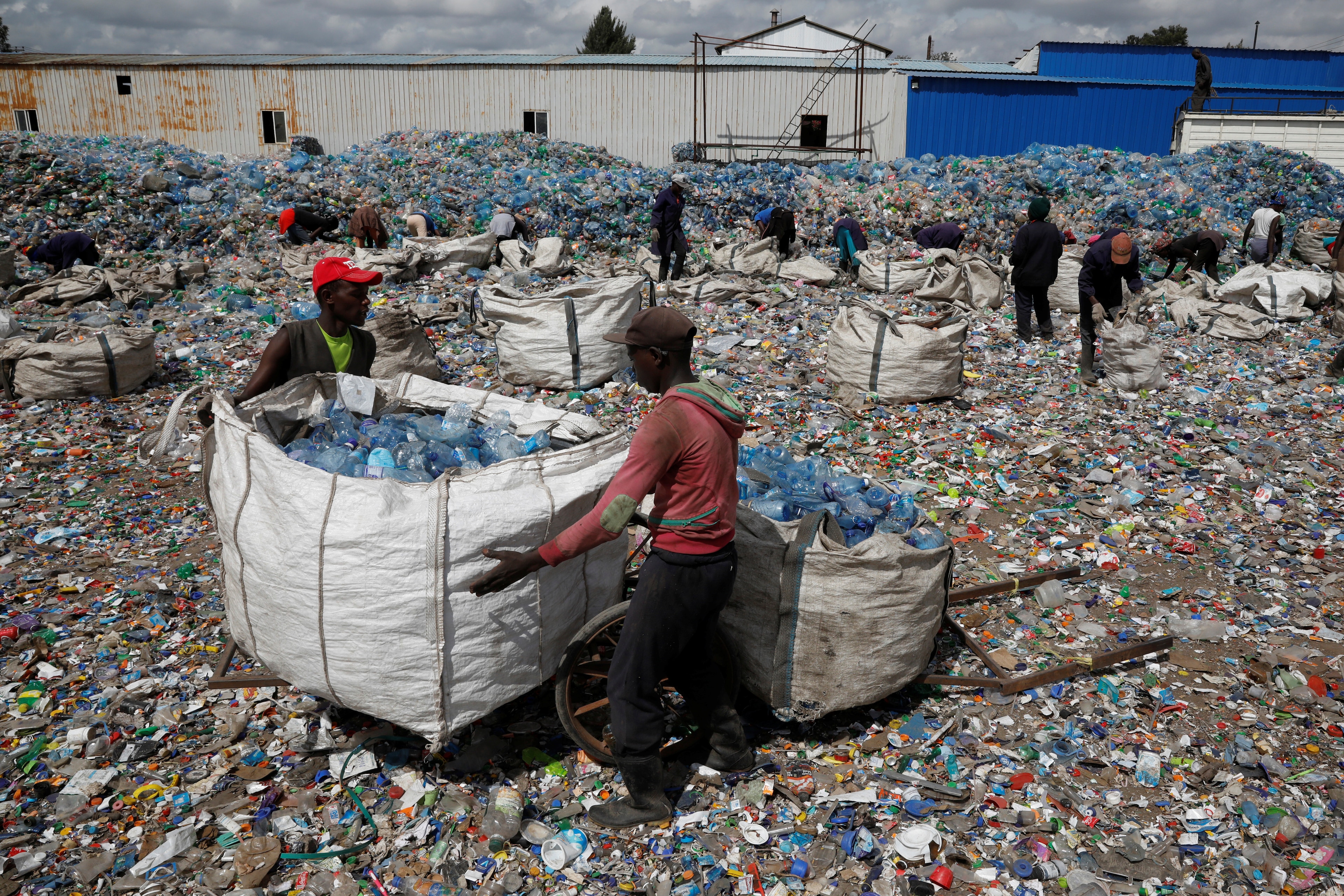This is how Oman can become a clean hydrogen producing powerhouse
Green hydrogen is produced using emissions-free renewable power sources, like wind, solar and hydro power to separate hydrogen from water.
Image: Unsplash/Dan Meyers
Stay up to date:
Oman
Listen to the article
- Oman could become a leading exporter of clean hydrogen by 2030, according to the International Energy Agency.
- The country’s rich renewable resources and available land could help support the country’s transition to a more sustainable energy future.
- The World Economic Forum’s Energy Transition Index 2023 finds a majority of countries are showing progress on making their energy sectors more sustainable.
The Middle East is synonymous with oil and natural gas, but Oman is championing clean ‘green’ hydrogen as a sustainable fuel of the future.
While Oman is currently a fossil-fuel producing country, it also has plentiful rich renewable resources and vast tracts of available land. And these resources could help turn it into a competitive low-emissions hydrogen supplier by the end of the decade, according to a new International Energy Agency (IEA) report.
Oman could become the world’s sixth biggest exporter of hydrogen
The report, entitled Renewable Hydrogen from Oman: A Producer Economy in Transition, is a first-of-its-kind analysis of hydrogen’s potential in a petro-state, which supports the country’s transition to a more sustainable energy future.
As part of Oman’s transition to more sustainable energy, the country aims to produce more than 1 million tonnes of clean ‘green’ hydrogen annually by 2030.
Annual production is projected to increase to 3.75 million tonnes a decade later and more than double to 8.5 million tonnes each year by 2050. If achieved, this target would exceed Europe’s current total hydrogen demand.
IEA analysis shows that Oman could become the world’s sixth biggest exporter of hydrogen by 2030. Export volumes equal to 1.1 Mt of hydrogen would also make the Gulf state the Middle East’s largest exporter, responsible for a projected 61% of the region’s hydrogen exports by 2030, compared to the United Arab Emirates (20%) and Saudi Arabia (16%).
“Oman is an oil and gas producer country that is taking an enlightened approach to its energy future, with a clear long-term vision and strong net-zero ambitions,” said IEA Executive Director, Fatih Birol.
“Thanks to its huge potential for low-cost solar and wind, renewable hydrogen is set to bring multiple benefits to Oman,” he said.
How is the World Economic Forum facilitating the transition to clean energy?
Hydrogen’s going green
Green hydrogen is produced using emissions-free renewable power sources, like wind, solar and hydro power to separate hydrogen from water. This makes it a sustainable fuel source that can be used to help hard-to-abate industries like steel making and shipping decarbonize.
Oman's planned projects will use electrolysis powered by renewable electricity to extract green hydrogen from desalinated sea water.
The country’s exports are likely to be transported in the form of ammonia, at least initially, which will need significant investment in storage tanks and dedicated deepwater jetties.
Oman’s high-quality renewable resources combined with dwindling global costs of electrolyzers, solar PV panels and wind, could see the cost of green hydrogen reduce significantly by 2030. For high-output low-demand countries like Oman and Chile, this could create cost advantages over larger more populous hydrogen producers.
Currently, most hydrogen is produced using fossil fuels like natural gas or methane, which is known as grey hydrogen. But as the energy transition seeks cleaner sources of power, policymakers and energy players are increasingly looking to green hydrogen to help achieve their net-zero ambitions.
Hydrogen is rapidly becoming a key part of the emerging clean energy mix as the global landscape evolves.
It’s a shifting landscape that could see Australia as the leading green hydrogen producer by 2030, according to market analysts Rystad Energy.
Australia is predicted to achieve 2,051.2 thousand tonnes of annual cumulative green hydrogen capacity by the end of this decade, closely followed by the US (2041.4) and Spain (1981.7).
As part of the World Economic Forum’s Fostering Effective Energy Transition 2023 report, this year’s Energy Transition Index 2023 finds a majority of countries are showing progress on making their energy sectors more sustainable, with developing nations like China, India and Indonesia showing notable improvements.
Accept our marketing cookies to access this content.
These cookies are currently disabled in your browser.
Don't miss any update on this topic
Create a free account and access your personalized content collection with our latest publications and analyses.
License and Republishing
World Economic Forum articles may be republished in accordance with the Creative Commons Attribution-NonCommercial-NoDerivatives 4.0 International Public License, and in accordance with our Terms of Use.
The views expressed in this article are those of the author alone and not the World Economic Forum.
Forum Stories newsletter
Bringing you weekly curated insights and analysis on the global issues that matter.
More on Nature and BiodiversitySee all
Tom Crowfoot
July 30, 2025
Oliver Kade and Sarah Hadley
July 28, 2025
Nasim Pour, Sebastien Cross and Joel Gould
July 28, 2025
Elena Raevskikh and Giovanna Di Mauro
July 23, 2025
Arunabha Ghosh and Jane Nelson
July 22, 2025






